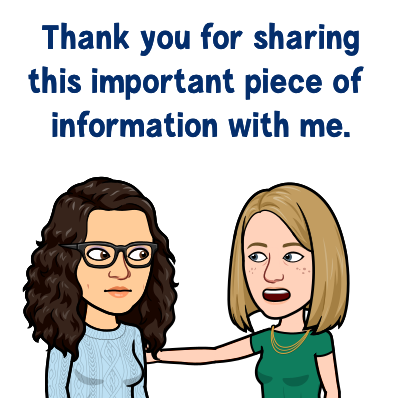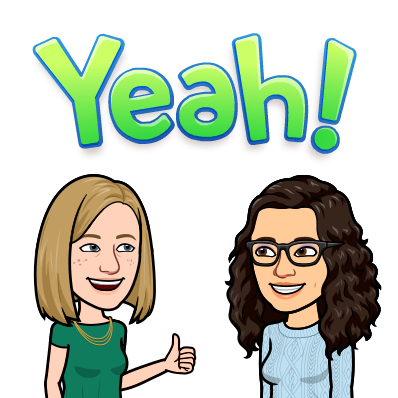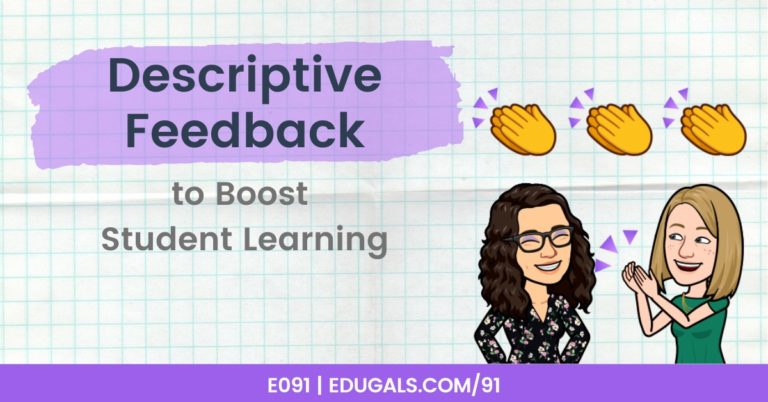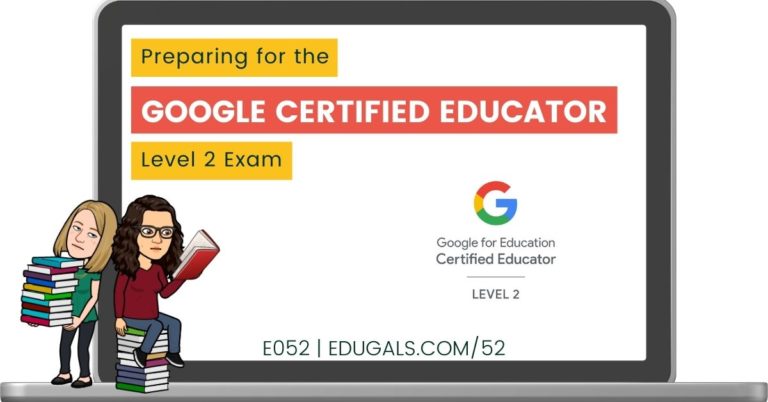You might be wondering what opening routines are and what they look like in a mastery-based classroom? Why do you even need an opening routine in the first place? As educators who have been exploring mastery-based learning in our classrooms, we can tell you from firsthand experience that opening routines help your students learn and settle into the daily routines of learning in your classroom.
Opening routines in a mastery-based classroom relate to the activities you do with students at the beginning of class as well as the beginning of the school year or semester. Some examples might include a unit zero to learn procedural routines of a mastery-based classroom, and various collaboration activities such as Thinking Classrooms and other whiteboarding work.
Are you curious to learn more? Then read on or listen to our podcast episode below where we are talking all about how we start out in our mastery-based classrooms. We will share how we set up our courses, and some daily activities you can use with your students.
Why Do We Need Opening Routines In A Mastery-Based Classroom?
Mastery-based learning can look very different in the classroom and you might be wondering how to get your students into the right mindsets so that they can focus on their self-paced lessons.
This is where opening routines comes in! You’ll want to consider how to start class, and what the opening routines might be. It’s also worth mentioning not only how to start a class, but how to start a course. When you’re diving into it, it’s important to think about how to get students prepared and into the mindset of doing things a little different, and how they can make it work.
It really does take a lit bit more strategizing and thinking about being intentional in your planning as you’re starting out in a mastery-based learning model. And it can take a little longer to dive into content, because it’s getting students used to some of these routines, and the change of direction.

Opening Routines For The Start of The Year or Semester
Starting Off With A Unit Zero
What is a unit zero? Basically it is a short unit, only 2-3 lessons long, so it only takes 1-3 days, but it’s learning about all of the logistics of the mastery classroom before diving into the curriculum.
This includes doing mastery checks, grabbing and watching videos, doing guided notes, navigating the learning management system (LMS) etc. – all of the different pieces of the mastery classroom in a very low stakes way since it isn’t curriculum-based. This will help students get comfortable with the language of the course, as well as the different tasks that they will encounter throughout the course.
While it might seem like you are taking time away from your curriculum, a unit zero really does set the stage for what learning will look like for the rest of your course. It gives students a chance to get used to all of the procedural elements so that they can be successful in their learning moving forward.
Using Diagnostic Assessments
Starting off with a variety of diagnostic assessments is a great way to understand what your students already know and don’t know. This can then help you design lessons moving forward so that they are tailored to your students learning needs.
For example, Katie takes the first two weeks as a diagnostic time period, since students are still arriving, and with a mixed level classroom, she needs to get better acquainted with their English proficiency levels in each of the different strands of language.
Students enter the classroom with a proficiency report that was completed by an elementary teacher (if they are transitioning from Grade 8), or from the Welcome Centre where their language skills were just recently assessed.
She has to figure out if those language proficiency levels are accurate, or if perhaps students were nervous or uncomfortable during the assessment, so the results don’t align with their proficiency.
Getting To Know You Activities
Regardless of whether you use a unit zero or diagnostic assessments or a mix of both, you should definitely include some getting to know you activities. If you’d like to learn more about activities to build community in your classroom, we wrote a great article on fun ways to include these activities so be sure to check it out! There are lots of great templates for you to grab as well!
Video Introductions
One idea is that you can create a video about yourself and then challenge your students to come and ask you at least one question to get to know you better. Then you can ask your students a question too! This removes the stress of asking the teacher questions, or approaching the teacher at the front of the classroom, and also has the benefit of letting students see that teachers are human too.
Student Interest Forms

You can also get your students to fill out a form that is all about them so that you can get to know them better. If you do this though, make sure you actually read the responses and use the information to connect with your learners in your daily interactions! This helps your students see that you actually care and value their insights.
Community Building With Other Classes
You might also consider community building activities with other classes in the same grade or subject area too! For example, Katie works with the students assigned to her class initially, and then ends up doing a lot of mixed and whole group activities across the ESL program. A lot of English language learners tend to be nervous and quiet at first because they are afraid of making mistakes, so there is so much time that is put into making everyone feel comfortable, and getting to know the teachers as human beings.
There’s something to be said about getting students to a point where they are all talking to one another, laughing, joking, and being extremely loud – and all of this across languages and cultures.
It’s also important to get students comfortable and accustomed with their individual STEP levels versus the course code that they are in. In this type of classroom, the students will be working on tasks based on their skill level (STEP level), so if they are at different proficiency levels for one of the strands of language, they will be working at different levels of tasks that reflect their current skills. This means a lot of conferencing and check-ins to make sure the process is transparent, that students recognize where they are at, and to give updates as needed.
Whole Class Activities For Opening Routines
It’s also important to do whole class activities to open classes during start up. Some of this may include getting students to think about what they learned last year, to see how much they can recall. It’s easy to try this with your students and you’ll likely be impressed and surprised by how much they remember.
You can also try incorporating games into your opening routines to build classroom community. For example, GimKit is an awesome (and quick way) to implement game-based learning activities in the classroom. They have a few free modes each month now that you can play with larger classes. Games can be a great way to make things fun, get to know each other, and also do some quick review and check ins.
Opening Routines On A Day-To-Day Basis
The day to day is going to look different, depending on the course you are teaching and the students in the class. This will also depend on requirements from your school and principal… but there are lots of ways to build these requirements in and still have a successful mastery-based learning environment!
Starting With A Whole Group Mini-Lesson
One way that you can start off your class is with a whole group mini-lesson. Usually, you would want to deliver a lesson that is related to your “on-pace” lesson of the day. This can help to clarify the learning goals for the day, as well as answer potential questions that students might have about the topic. It can also clear up any misconceptions before students dive into the lesson itself.
For example, Katie tends to start by having all of the students sitting in their STEP groups. She’ll deliver a lesson full class, and then break down the expectations for each STEP level, modelling it so that students know what they should be working on.
This helps students at lower STEP levels see what they need to do to work towards the higher proficiency levels, and also allows all students to see how each STEP differs in terms of expectations and output. It can be quite motivating!
This has made a big difference for all students, as they clearly see the distinction between STEP levels and the language that needs to be demonstrated to move up, and it decreases the pressure about marks and grading conversations because they know what they need to do to develop their language.
It still isn’t perfect, and it isn’t consistent or easy, but this direction for the program has been significant and has had a great impact. It’s all about slow and steady progress and change – students and families are noticing the differences, and the community has also recognized the shift in teaching practices.
Starting With Collaborative Warm-Up Activities
You might consider instead to create some sort of warm-up activity for your students to work on collaboratively. Our recommendation is to design something related to the “on-pace” lesson for that day that gets students talking and up and out of their seats. Whiteboards can be amazing for this – students love to write on them and are highly engaged with these sorts of activities!
For example I am a big fan of using thinking classrooms as warm up activities. I don’t really use this strategy in a traditional fashion, but I take some of the principles and run warm up activities instead.
To do this, you can get your students into randomized groupings. One tool that I love is Flippity to create these randomized groups. I’ll then put a couple of problems on the board (typically an on-pace or slightly behind pace question), and have students collaborate to complete the problems on the whiteboards.
I hold the groups to mastery on these warm-up problems, and once they have demonstrated proficiency as a group, they can sit down and get started on their self-paced lessons.
I don’t do this every single day, as it would become boring if I did, but I mix things up to keep students engaged. Other activities I like to use include demos, whiteboard activities, goals setting or SEL check-ins, games, etc.
Setting Up Your Course Structure To Support Mastery-Based Learning
Opt For Smaller Modules Instead of Traditional Units
Instead of traditional units, you might opt for smaller modules that are made up of a series of lessons. Think about breaking up your traditional units into key topics, using anywhere from 2-5 key concepts. An advantage of doing your course planning this way is to help your students feel successful as they get more opportunities to complete a module.
This strategy can also help your students with self-pacing through a module. I typically like to try for around 1 week but no longer than 2 weeks for a module itself. Students have a hard time planning for anything longer than that (we all know that students love to procrastinate!) so this type of time frame can be very helpful.
Using A Weekly Agenda Slide For Reminders
Agendas and progress trackers are a great way to be transparent in the classrooms, and to ensure students know what they should be doing to stay on-pace with the class. It also helps motivate students to complete work and lessons so that they don’t fall behind.
For example, I regularly use a weekly agenda slide that I put up at the beginning of the class. It shows all of the week’s lessons, what the pacing is, and reminders for important deadlines, dates, upcoming assignments, etc.
Once I review that with students, I then put up the progress trackers so that students are aware of the on-pace lesson, and students can track where they need to be.
Other Helpful Opening Routines Resources
One resource that we are going to share from the Modern Classrooms is another good resource for opening and closing routines. They talk about accountability groups, and having students meet in small groups to discuss and talk about their goals, what they hope to accomplish that day, week, etc. and how they can support one another.
This collaborative learning environment is so different from most traditional classroom settings – often students can feel defensive or feel like it’s a competition in class, so creating this collaborative classroom reduces stress, and opens up opportunities to work with others.
They also have some great ideas for closing routines in this same resource so be sure to check it out!






